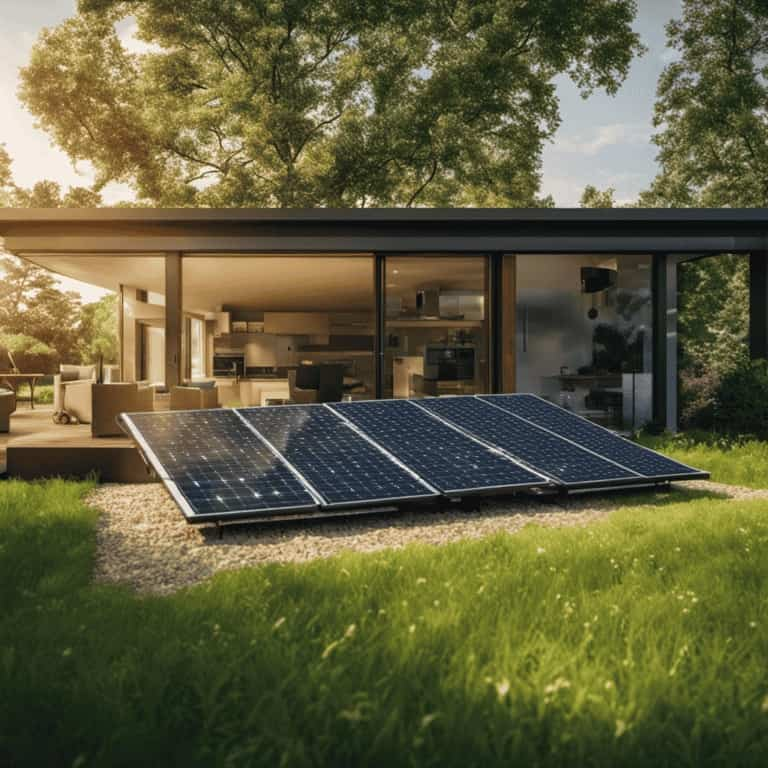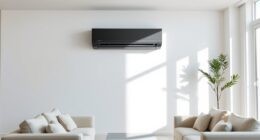We have 14 crucial tips to boost the efficiency of your heat pump in eco-friendly homes.
Did you know that heating and cooling account for up to 50% of energy usage in a typical home? That’s why it’s crucial to optimize your heat pump performance.
From choosing the right size unit to weatherproofing your home, we’ll show you how to maximize efficiency and reduce energy costs.
Get ready to master the art of heat pump efficiency and create a more sustainable home.
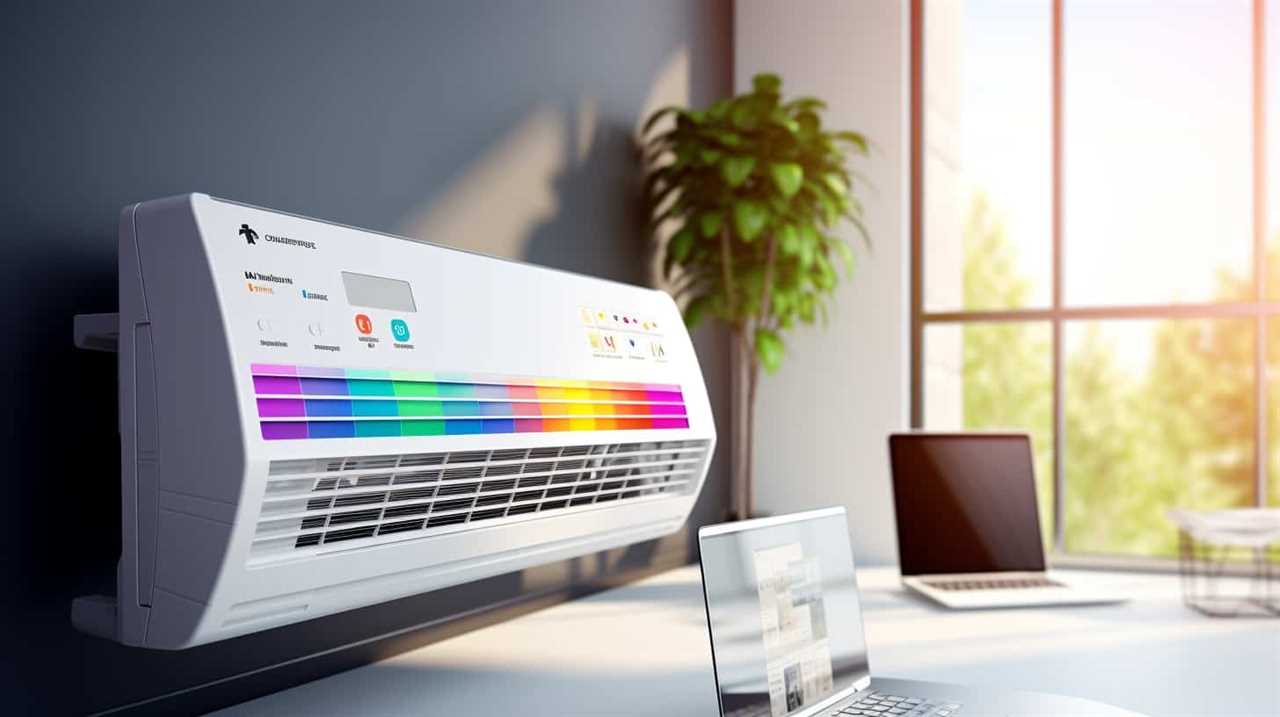
Key Takeaways
- Proper sizing of the heat pump is essential for optimal efficiency.
- Regular maintenance improves efficiency and prolongs the heat pump’s lifespan.
- Use energy monitoring tools to track energy consumption and identify areas for improvement.
- Insulation plays a crucial role in maximizing heat pump performance and reducing energy consumption.
Understanding Heat Pump Efficiency
To maximize the efficiency of our heat pump, we need to understand how it works. Heat pump performance directly impacts energy consumption, making it crucial to grasp the inner workings of this system.
A heat pump operates by transferring heat from one location to another using a refrigerant. It functions on the principle of extracting heat from a cold space and pumping it into a warmer space. This process requires a small amount of energy to operate the pump and compressor.
The efficiency of a heat pump is measured by its coefficient of performance (COP), which compares the amount of heat produced to the energy consumed. A higher COP signifies better efficiency and lower energy consumption, resulting in cost savings and reduced environmental impact.
Choosing the Right Size Heat Pump for Your Eco-Home
We should consider the square footage and insulation of our eco-home when choosing the right size heat pump. Heat pump sizing considerations are crucial for ensuring optimal performance and energy efficiency.
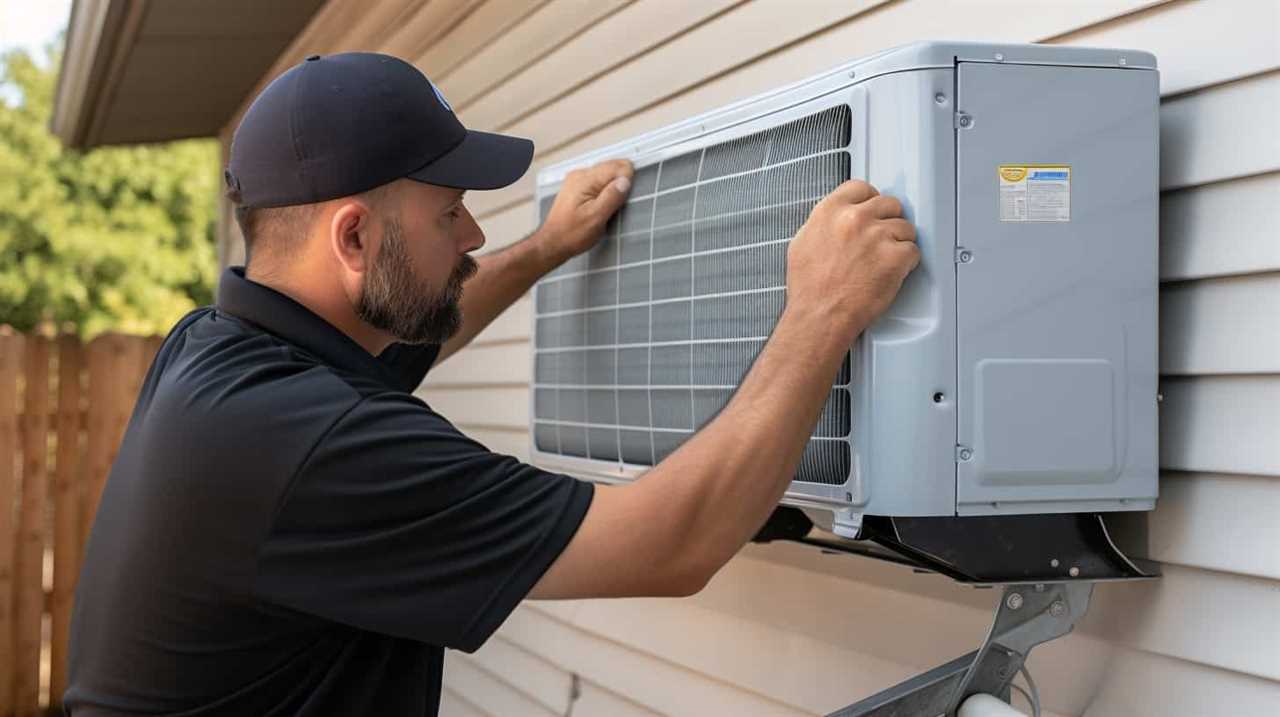
An undersized heat pump may struggle to adequately heat or cool our home, leading to discomfort and increased energy consumption. On the other hand, an oversized heat pump may cycle on and off frequently, resulting in inefficient operation and unnecessary wear and tear.
To determine the appropriate size, we need to calculate the heating and cooling loads based on factors such as square footage, insulation levels, and climate. Consulting with a professional HVAC technician is recommended to accurately assess our eco home heat pump requirements.
Proper Heat Pump Installation Techniques
When it comes to proper heat pump installation techniques, there are a few key points to keep in mind.
-
First, optimal placement is crucial for maximizing efficiency. This means ensuring that the heat pump is installed in a location that allows for proper airflow and minimal obstructions.

-
Second, correct ductwork installation is essential for proper air distribution throughout the home.
-
Finally, regular maintenance is important to keep the heat pump running smoothly and efficiently.
Optimal Placement for Efficiency
The optimal placement for efficiency in heat pump installation is crucial for maximizing its performance in eco-homes. When determining the optimal positioning for your heat pump, consider the following landscaping considerations:
-
Location: Place the heat pump in a shaded area to prevent it from being exposed to direct sunlight, which can decrease its efficiency.
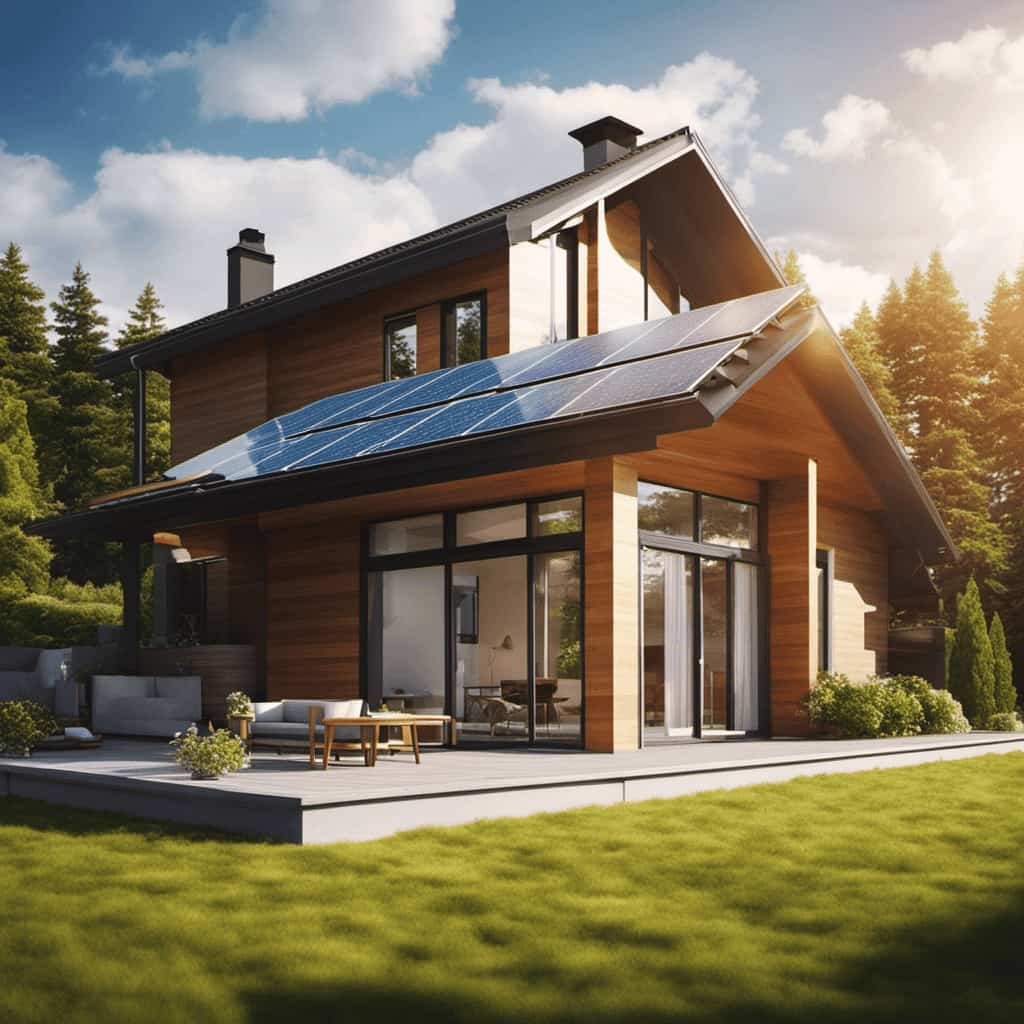
-
Airflow: Ensure that there’s ample space around the heat pump for proper airflow. Avoid placing it near obstructions that could restrict airflow, such as tall bushes or fences.
-
Noise reduction: If noise is a concern, consider placing the heat pump away from living areas or bedrooms to minimize any potential disturbance.
-
Accessibility: Install the heat pump in a location that allows easy access for maintenance and repairs.
By taking these factors into account, you can optimize the efficiency of your heat pump installation.

Now let’s move on to the next section, where we’ll discuss the importance of correct ductwork installation.
Correct Ductwork Installation
How can we ensure correct ductwork installation and proper heat pump installation techniques for optimal efficiency in eco-homes?
Proper maintenance and ductwork design are crucial factors that contribute to the efficiency of heat pumps in eco-homes. When it comes to ductwork installation, it’s important to ensure that the ducts are properly sealed and insulated to prevent air leakage and heat loss. Additionally, the design of the ductwork system should be optimized to minimize the resistance to airflow and ensure balanced distribution of conditioned air throughout the home.
By following these proper installation techniques, including careful sealing and insulation of ducts, as well as optimized ductwork design, we can maximize the efficiency of heat pumps in eco-homes.

Now let’s explore the importance of regular maintenance in maintaining optimal heat pump efficiency.
Importance of Regular Maintenance
To ensure optimal heat pump efficiency, it’s essential that we regularly maintain our systems and adhere to proper installation techniques. Here are some key reasons why regular maintenance is important:
-
Preventing breakdowns: Regular maintenance helps identify and address any potential issues before they become major problems. This can help prevent unexpected breakdowns and costly repairs.
-
Increasing lifespan: Proper maintenance extends the lifespan of your heat pump. Regular inspections, cleaning, and lubrication can keep your system running smoothly and efficiently for years to come.
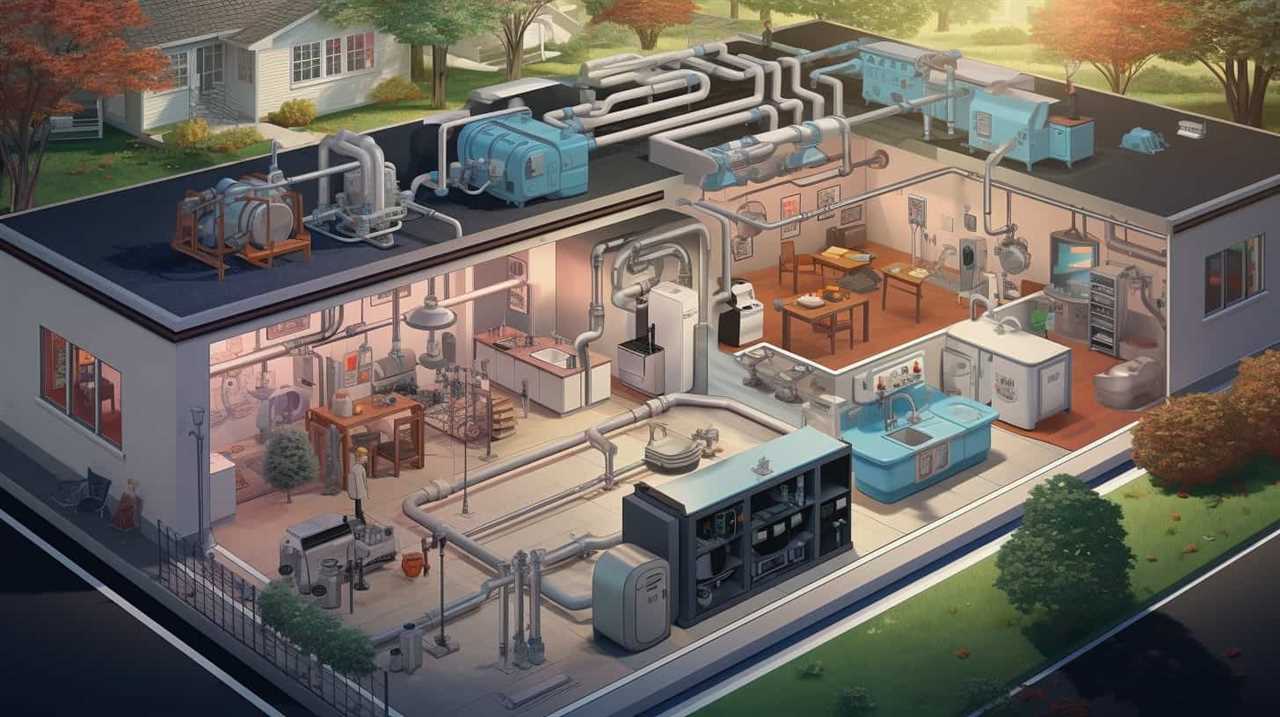
-
Maintaining energy efficiency: A well-maintained heat pump operates more efficiently, which can lead to lower energy bills and reduced environmental impact.
-
Ensuring optimal performance: Regular maintenance ensures that your heat pump is performing at its best, providing consistent heating and cooling throughout your home.
By prioritizing regular maintenance, we can prevent breakdowns, increase the lifespan of our heat pumps, and ensure they operate at their highest efficiency.
Let’s now delve into the importance of regular heat pump maintenance.
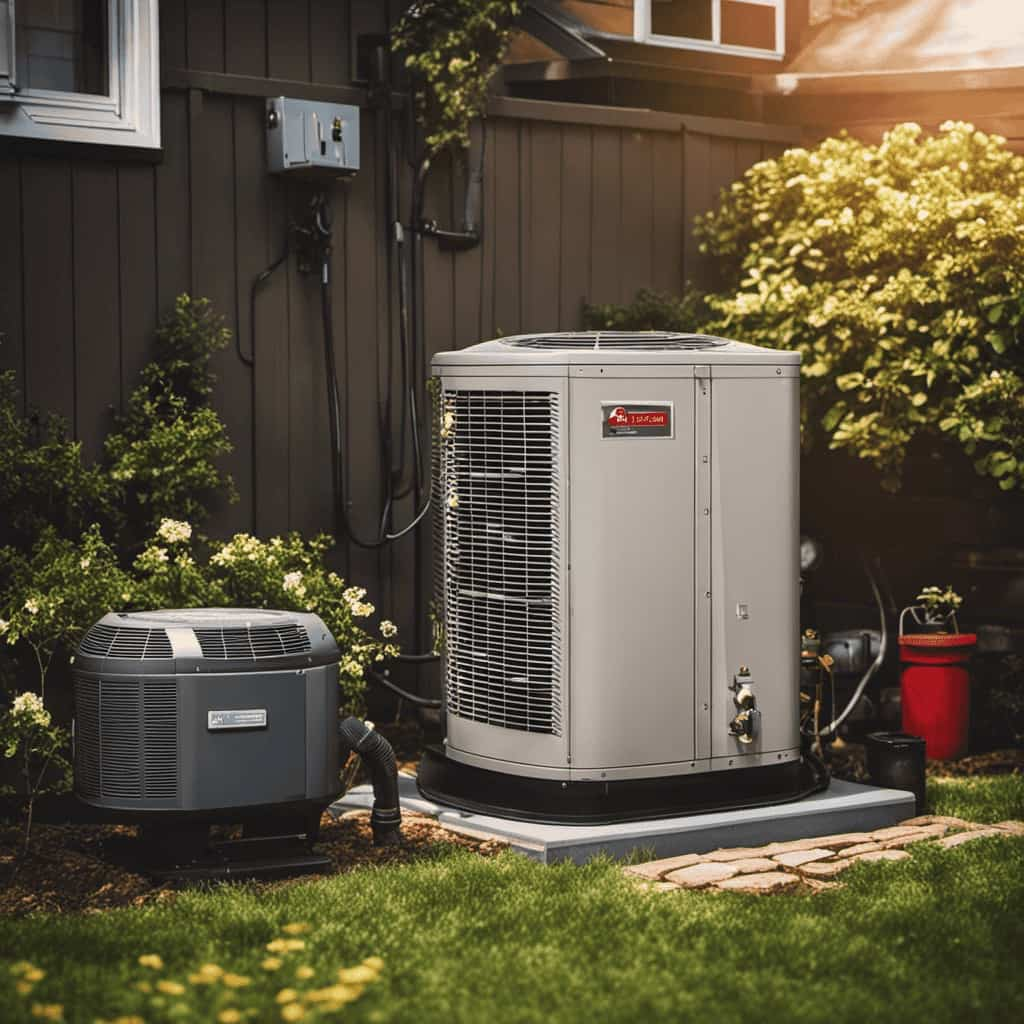
Importance of Regular Heat Pump Maintenance
Regular heat pump maintenance is essential for optimal performance and efficiency. By preventing system malfunctions, we can avoid costly repairs and ensure that our heat pump operates smoothly throughout the year.
Additionally, regular maintenance helps maximize energy savings and extends the lifespan of the equipment, making it a smart investment for eco-home owners.
Preventing System Malfunctions
We should prioritize routine heat pump maintenance to prevent potential system malfunctions. Regular maintenance not only ensures the longevity of your heat pump but also helps optimize its performance. Here are some essential tips for preventing system breakdowns and troubleshooting common issues:
- Clean or replace air filters regularly to maintain proper airflow and prevent dust buildup.
- Check and clean the outdoor unit to remove any debris or obstructions that could hinder its operation.
- Inspect and clean the evaporator and condenser coils to improve heat transfer efficiency.
- Check the refrigerant levels and ensure they’re within the manufacturer’s recommended range.
Maximizing Energy Savings
By properly maintaining our heat pump, we can significantly increase energy savings and reduce our environmental impact. Regular maintenance ensures that our heat pump operates at peak efficiency, maximizing insulation effectiveness and incorporating passive cooling techniques.
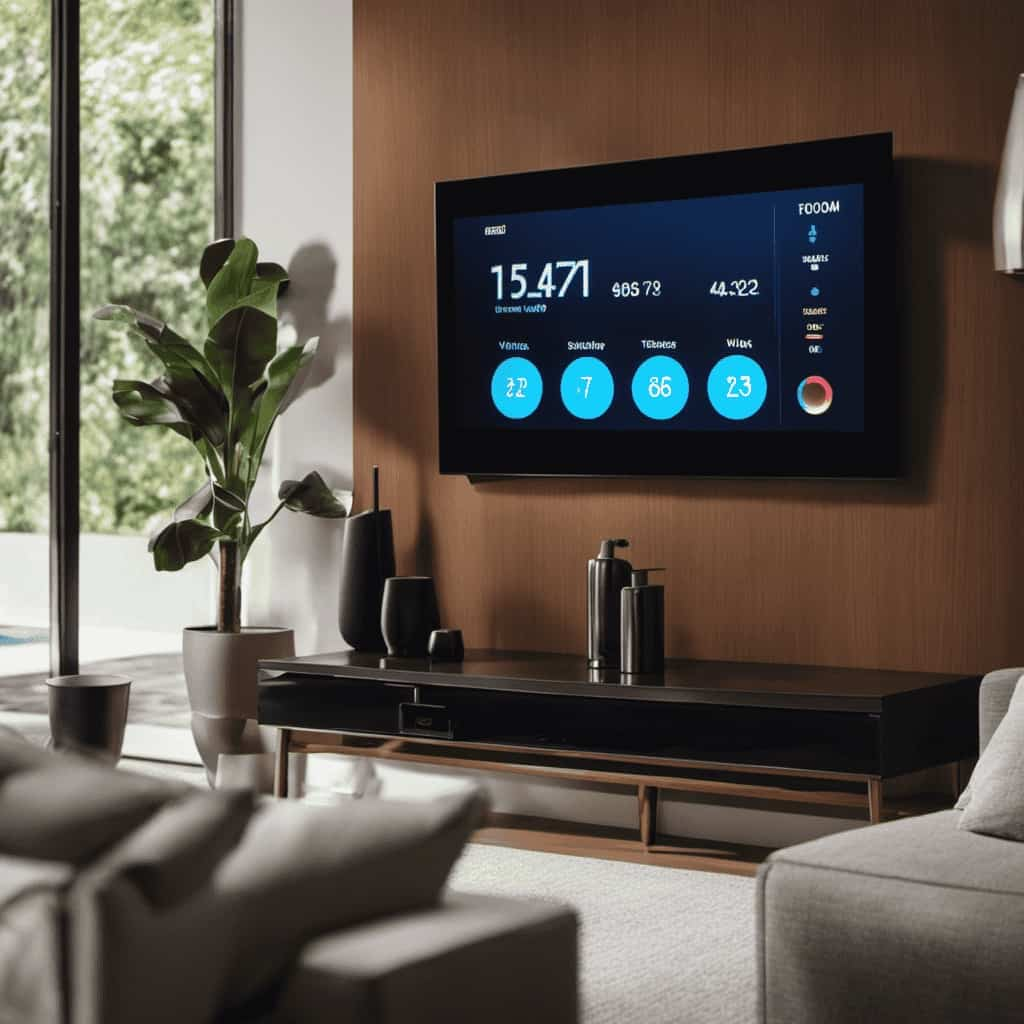
Here are some key maintenance tasks to consider:
-
Clean or replace air filters: Dirty filters restrict airflow and make the heat pump work harder, increasing energy consumption.
-
Inspect and clean outdoor unit: Remove debris, leaves, and dirt from the outdoor unit to maintain proper airflow.
-
Check refrigerant levels: Low refrigerant levels can reduce the heat pump’s efficiency. Consult a professional to check and refill if necessary.
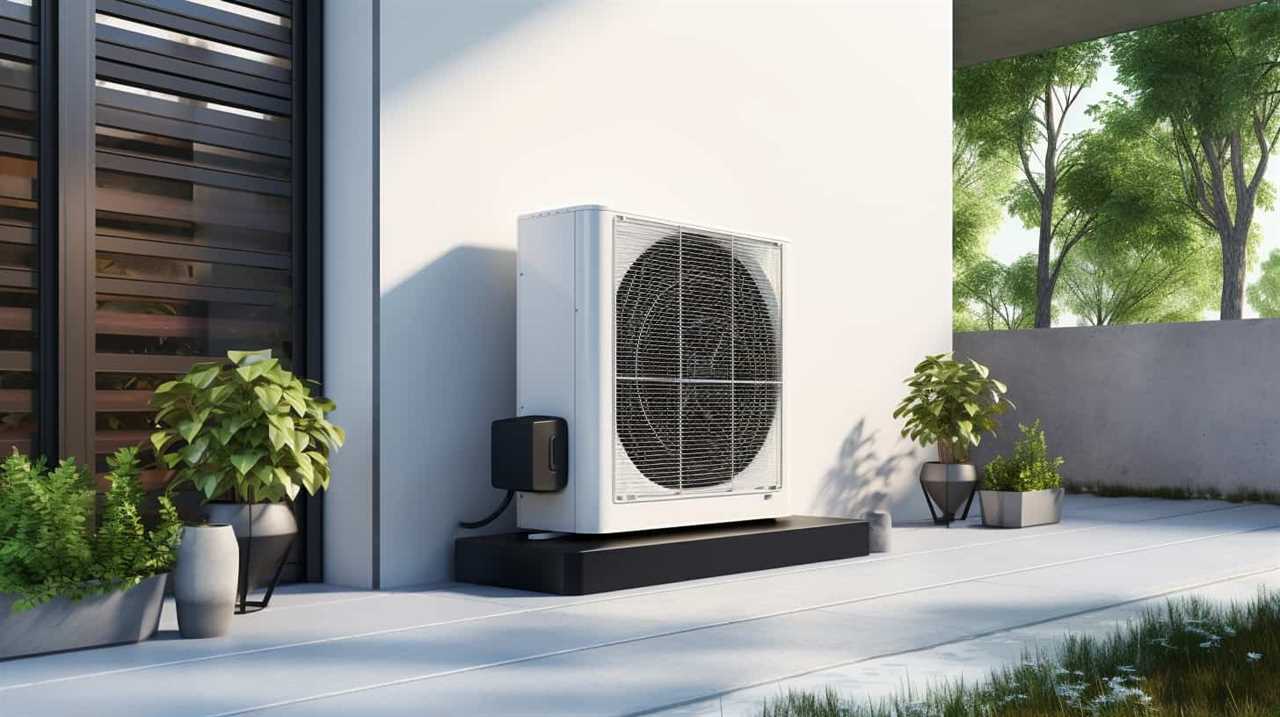
-
Schedule professional maintenance: Regular tune-ups by a qualified technician can identify and fix any issues, ensuring optimal performance.
Implementing these maintenance practices will help us save energy, reduce our carbon footprint, and prolong the lifespan of our heat pump.
Extending Equipment Lifespan
With proper heat pump maintenance, we can extend the lifespan of our equipment, ensuring optimal performance and energy efficiency. Regular maintenance plays a crucial role in maximizing efficiency and increasing equipment longevity. Here are some key reasons why regular heat pump maintenance is essential:
- Prevents breakdowns and costly repairs
- Improves energy efficiency, reducing utility bills
- Enhances indoor air quality by keeping the system clean
- Maintains warranty coverage and protects your investment
By scheduling regular maintenance appointments with a qualified technician, you can identify and address any potential issues before they become major problems. This proactive approach not only saves you money but also extends the lifespan of your heat pump, allowing it to operate at its full potential for years to come.

Now, let’s delve into the next topic: optimizing heat pump performance with insulation.
Optimizing Heat Pump Performance With Insulation
Insulating your home is crucial for maximizing heat pump performance. By using high-quality insulating materials, you can prevent heat loss and ensure that your heat pump operates efficiently.
Insulation acts as a barrier, reducing the amount of heat that escapes from your home in the winter and enters in the summer. This means that your heat pump doesn’t have to work as hard to maintain a comfortable temperature, resulting in lower energy consumption and reduced utility bills.
When insulating your home, pay attention to areas prone to heat loss, such as windows, doors, walls, and the attic. By properly insulating these areas, you can create a well-sealed and energy-efficient environment that optimizes the performance of your heat pump.

Smart Thermostats for Heat Pump Efficiency
We can enhance the efficiency of our heat pump by using smart thermostats. Here are some smart thermostat features that can help optimize heat pump efficiency:
-
Remote temperature control: With a smart thermostat, you can adjust the temperature of your home from anywhere using your smartphone. This allows you to turn off the heat pump when you’re not at home and turn it on before you return, ensuring energy isn’t wasted.
-
Learning capabilities: Smart thermostats can learn your schedule and adjust the temperature accordingly. They can also adapt to your preferences over time, saving energy by avoiding unnecessary heating or cooling.
-
Energy usage monitoring: Many smart thermostats provide real-time energy usage data, allowing you to track and analyze your energy consumption. This information can help you make informed decisions to further improve efficiency.
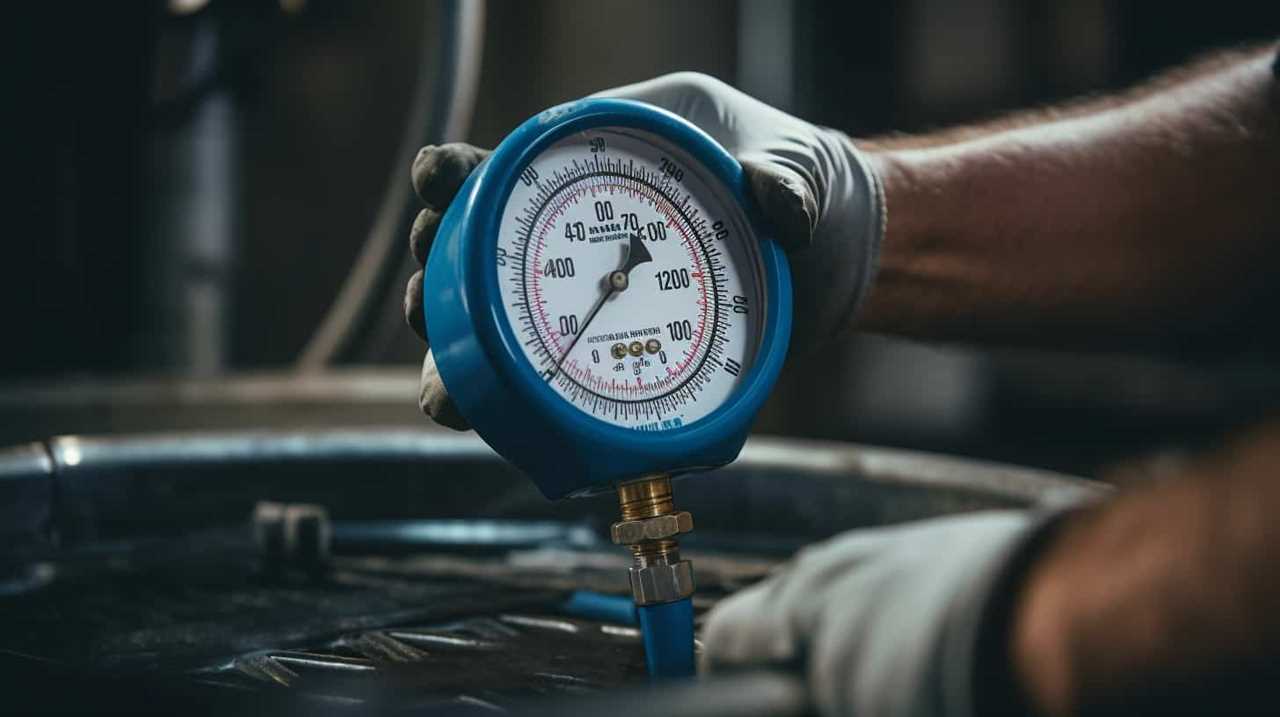
-
Integration with other smart devices: Smart thermostats can be connected to other smart home devices, such as occupancy sensors or weather stations, to optimize energy usage based on occupancy and weather conditions.
Using Programmable Timers to Maximize Heat Pump Efficiency
To maximize heat pump efficiency, we can utilize programmable timers in our eco-homes. Programmable timers are a valuable tool that allows us to schedule and control the operation of our heat pumps, optimizing energy usage and reducing costs.
By setting specific temperature levels for different times of the day, we can ensure that our homes are comfortably heated when needed, while also minimizing energy consumption during periods of low occupancy or when we’re asleep.
This not only helps us save money on our energy bills but also reduces our carbon footprint. Programmable timers are a key component of energy-saving strategies in eco-homes, providing us with the convenience and control to maximize the efficiency of our heat pumps and create a more sustainable living environment.
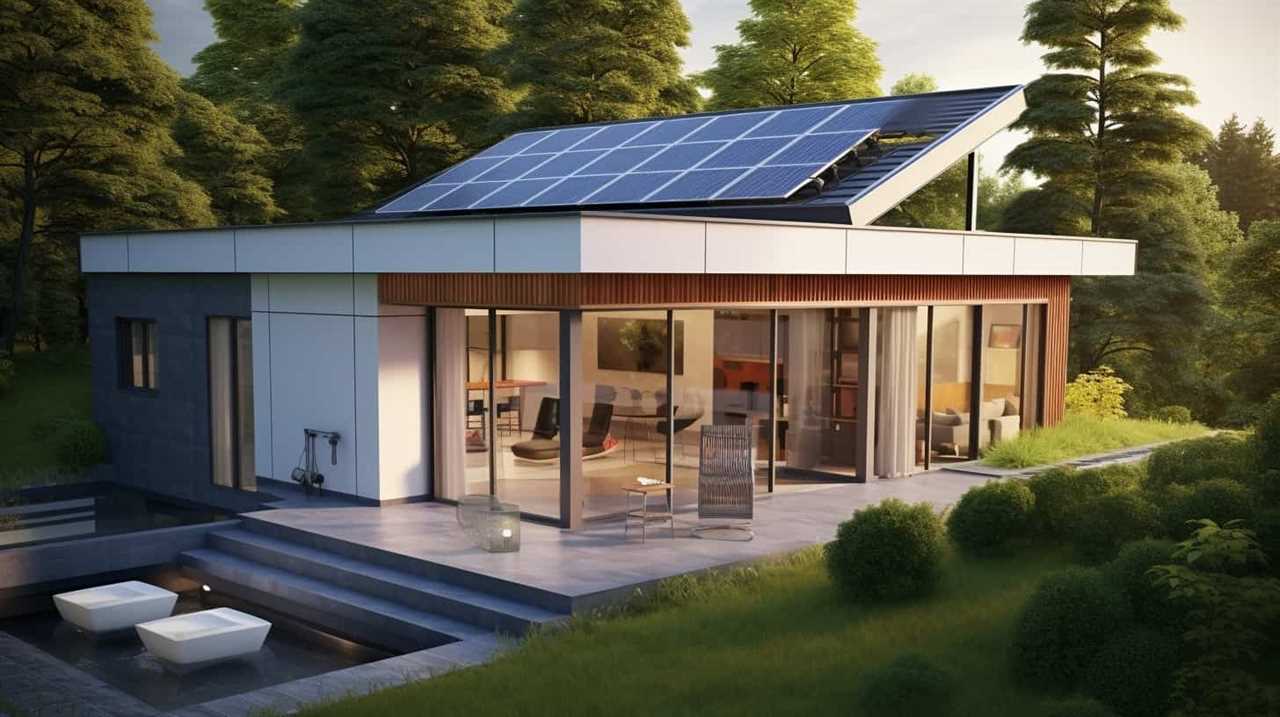
Setting the Right Temperature for Energy Savings
When it comes to maximizing energy efficiency in our eco-homes, setting the right temperature is crucial.
By finding the optimal temperature settings for our heat pumps, we can ensure that we aren’t wasting energy or money.
It’s important to strike a balance between comfort and energy savings, and by following some simple guidelines, we can achieve both.
Optimal Temperature Settings
For optimal energy savings, set your heat pump temperature at an appropriate level. Proper temperature control is crucial in maximizing energy efficiency and reducing your carbon footprint. Here are some practical tips to help you set the right temperature for energy savings:
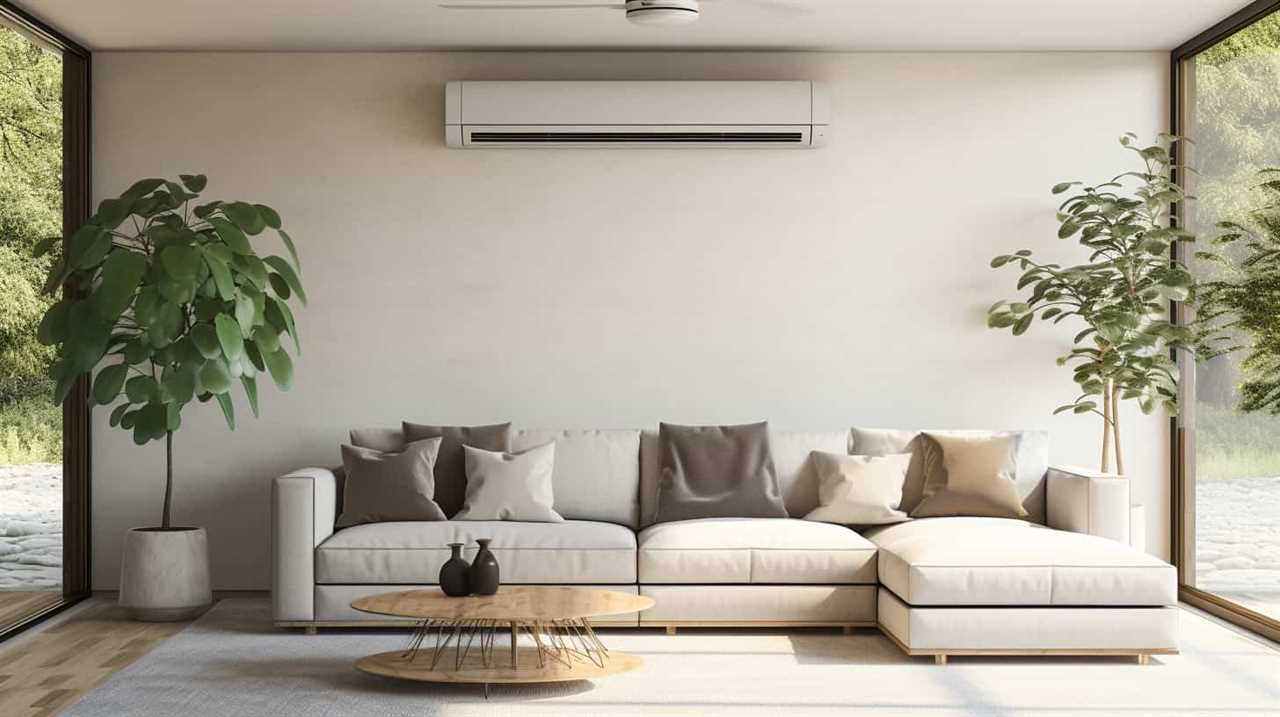
-
Find the sweet spot: Experiment with different temperature settings to find the most comfortable yet energy-efficient level for your home.
-
Utilize programmable thermostats: Take advantage of programmable thermostats to automatically adjust the temperature when you’re not at home or during sleeping hours.
-
Embrace layering: Instead of cranking up the heat, layer your clothing and use blankets to stay warm during cooler months.
-
Maintain consistent temperatures: Avoid drastic temperature fluctuations and strive for a consistent indoor climate to minimize energy consumption.

By implementing these strategies, you can optimize your heat pump’s efficiency and reduce energy waste.
Now, let’s move on to maximizing energy efficiency in other areas of your eco-home.
Maximizing Energy Efficiency
Our goal is to maximize energy efficiency in our eco-home by setting the right temperature for energy savings.
One important factor in achieving this is maximizing insulation effectiveness. Ensuring that our home is well-insulated helps to minimize heat loss in the winter and heat gain in the summer. This reduces the workload on our heat pump, leading to lower energy consumption.
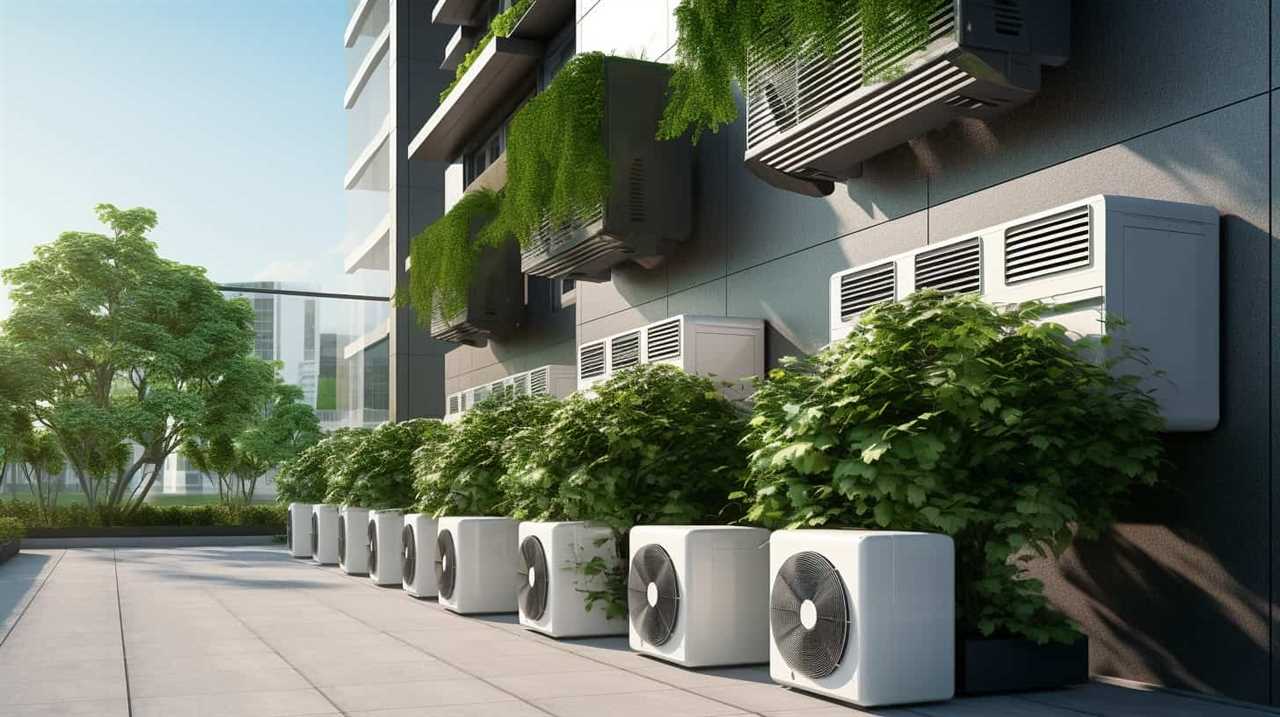
Additionally, optimizing airflow direction can further enhance energy efficiency. By keeping air vents clear and unobstructed, we can ensure that the conditioned air circulates effectively throughout our home. This helps to maintain a consistent temperature and reduces the need for the heat pump to work harder.
With these strategies, we can make the most of our heat pump’s energy-saving capabilities and create a more eco-friendly living environment.
Airflow Optimization for Enhanced Heat Pump Efficiency
We can maximize the efficiency of our heat pump by optimizing airflow. Proper airflow management and fan speed control are essential for enhancing the performance of our heat pump system.
Here are some practical tips to optimize airflow and improve heat pump efficiency:

- Clean the air filters regularly to ensure unrestricted airflow.
- Keep the outdoor unit free from debris and vegetation to allow proper airflow.
- Consider using a variable-speed fan to adjust the airflow according to the heating or cooling needs.
- Ensure that the supply and return vents aren’t blocked or obstructed to maintain proper airflow circulation.
Utilizing Geothermal Heat Pump Systems for Renewable Energy
When it comes to renewable energy in eco-homes, geothermal heat pump systems are an excellent option to consider. These systems utilize the constant temperature of the earth to provide heating and cooling, making them highly efficient and environmentally friendly.
The benefits of geothermal heat pumps include reduced energy consumption, lower utility bills, and a smaller carbon footprint, making them a smart choice for homeowners looking to maximize their energy efficiency.
Geothermal Heat Pump Benefits
By utilizing geothermal heat pump systems for renewable energy, homeowners can benefit from increased energy efficiency and reduced carbon emissions. Geothermal heat pumps offer several advantages, such as:
- Lower operating costs: Geothermal heat pumps can save homeowners up to 70% on heating and cooling costs compared to traditional HVAC systems.
- Long lifespan: Geothermal heat pumps have a lifespan of 20-25 years, which is significantly longer than conventional systems.
- Minimal maintenance: These systems require minimal maintenance, leading to lower maintenance costs over time.
- Environmental friendliness: Geothermal heat pumps use renewable energy from the earth’s heat, reducing dependence on fossil fuels and lowering carbon emissions.
Although the initial cost of geothermal heat pump installation can be higher than traditional systems, the long-term savings and environmental benefits make it a worthwhile investment for eco-conscious homeowners.

Renewable Energy Advantages
Geothermal heat pump systems offer renewable energy advantages, such as increased energy efficiency and reduced carbon emissions. These systems harness the heat from the earth’s core, providing a constant and reliable source of energy for heating and cooling purposes. By utilizing geothermal heat pump systems, homeowners can significantly reduce their carbon footprint and contribute to a more sustainable future.
Table: Renewable Energy Advantages of Geothermal Heat Pump Systems
| Advantages | Benefits |
|---|---|
| Increased Energy Efficiency | Geothermal heat pumps are up to 400% more efficient than traditional heating and cooling systems. |
| Reduced Carbon Emissions | By relying on renewable energy, geothermal systems produce significantly fewer greenhouse gas emissions. |
| Cost-Effective Solutions | While the initial installation costs may be higher, geothermal heat pump systems offer long-term savings on energy bills. |
| Reliable and Low Maintenance | Geothermal systems have fewer moving parts, resulting in reduced maintenance requirements and increased reliability. |
Utilizing geothermal heat pump systems not only provides a cost-effective solution for homeowners but also contributes to a greener and more sustainable future by reducing carbon emissions. With increased energy efficiency and low maintenance requirements, these systems offer an ideal renewable energy option for eco-homes.
Efficiency of Heat Pumps
We often overlook the efficiency of heat pumps when utilizing geothermal heat pump systems for renewable energy in our eco-homes. However, understanding heat pump technology and energy efficiency ratings for heat pumps is crucial for maximizing their performance and reducing energy consumption.
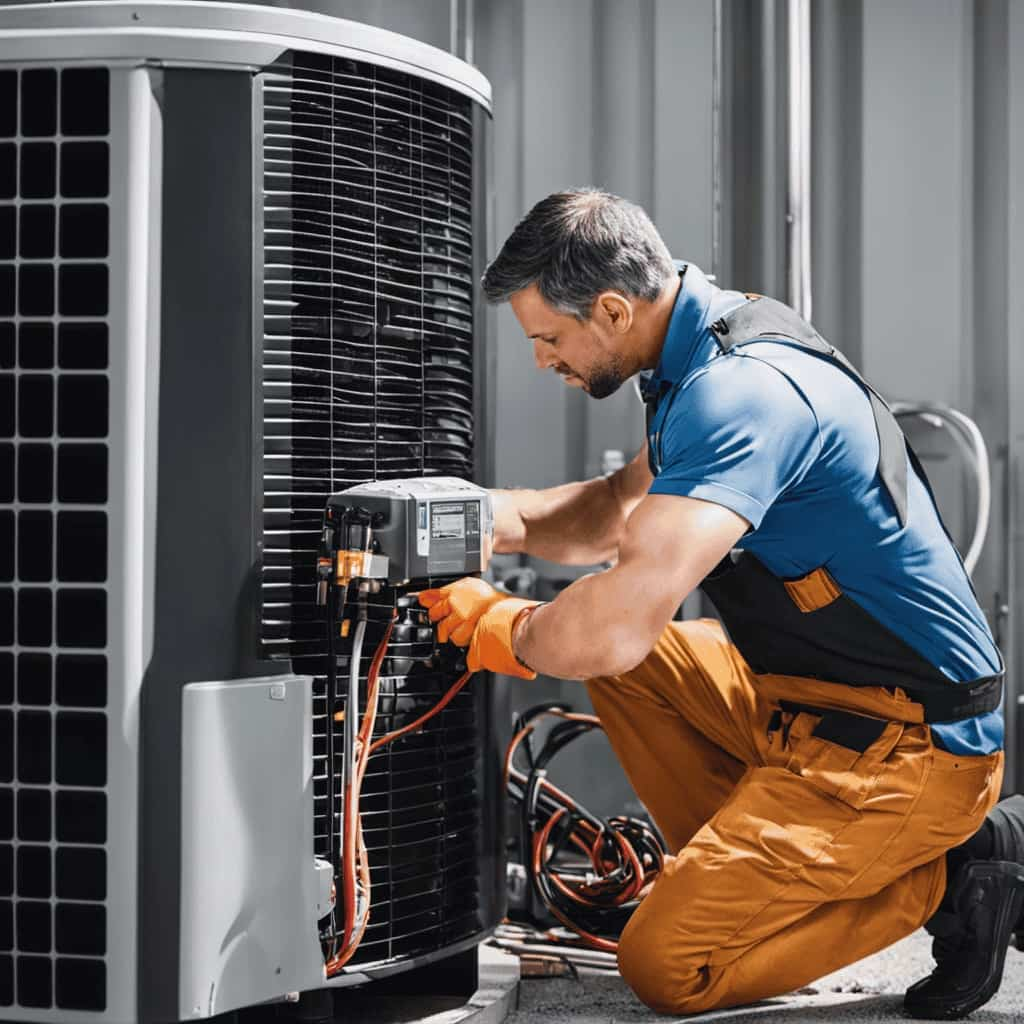
Here are some key points to keep in mind:
-
Proper sizing: Ensuring that the heat pump is correctly sized for your home is essential for optimal efficiency.
-
Seasonal performance: Look for heat pumps with high seasonal energy efficiency ratio (SEER) and heating seasonal performance factor (HSPF) ratings to ensure efficient operation throughout the year.
-
Regular maintenance: Regularly servicing and maintaining your heat pump will help improve its efficiency and prolong its lifespan.
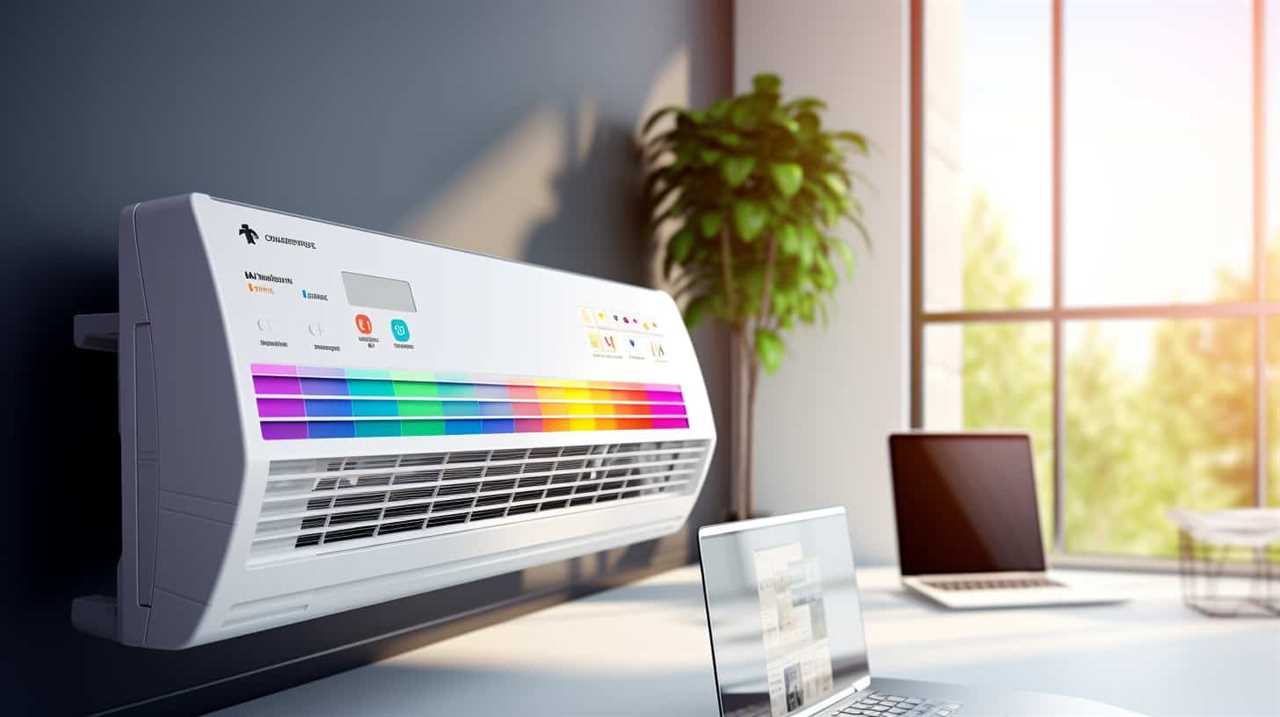
-
Energy monitoring: Using energy monitoring tools can help you track the energy consumption of your heat pump and identify areas for improvement.
Solar Panels to Power Your Heat Pump
Installing multiple solar panels can significantly boost the efficiency of our heat pump system. By harnessing the power of the sun, solar panels provide a renewable and clean source of energy to power our heat pumps.
When considering solar panel installation, it’s important to take advantage of government incentives that may be available. These incentives can help offset the cost of installation and make it more affordable for homeowners.
Additionally, solar panels can generate excess electricity, which can be stored or sold back to the grid, further maximizing their efficiency.

Weatherproofing Your Eco-Home for Improved Heat Pump Efficiency
Let’s make sure our eco-home is properly weatherproofed to maximize the efficiency of our heat pump. Weatherproofing techniques and insulation methods can significantly reduce heat loss and improve the overall performance of our heat pump system. Here are some effective strategies to consider:
-
Seal air leaks: Identify and seal any gaps, cracks, or openings in windows, doors, and walls to prevent cold drafts and heat loss.
-
Insulate walls and ceilings: Proper insulation helps to maintain a consistent indoor temperature and reduces the workload on the heat pump.
-
Install double-glazed windows: Double-glazed windows provide better insulation and minimize heat transfer between the inside and outside of the house.

-
Use weatherstripping: Apply weatherstripping around windows and doors to create a tight seal and prevent air leakage.
Heat Pump Efficiency in Different Climate Zones
Heat pump efficiency can vary in different climate zones, so it’s important to consider the specific needs and requirements of each region. When it comes to heat pump maintenance, there are some energy-saving tips that can help optimize efficiency in different climates.
In colder climates, it’s important to insulate the outdoor unit and check for any ice build-up. This will ensure that the heat pump can operate efficiently even in freezing temperatures.
In hotter climates, shading the outdoor unit can help prevent it from overheating and reduce the workload on the system. Regularly cleaning or replacing the air filters is also crucial for maintaining efficiency in any climate.
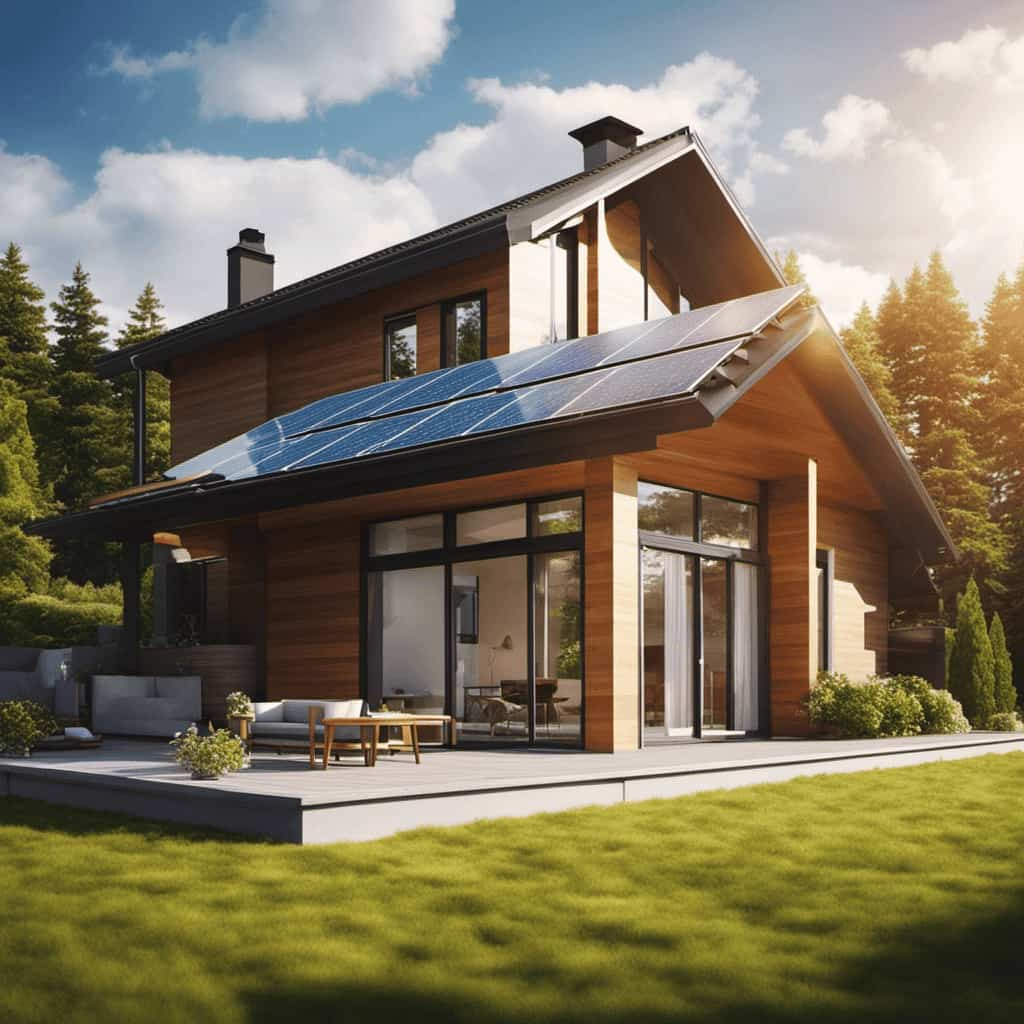
By following these maintenance tips, you can ensure that your heat pump operates at its highest efficiency level, regardless of the climate zone you’re in.
Now let’s move on to the next section about monitoring and tracking energy usage for heat pump efficiency.
Monitoring and Tracking Energy Usage for Heat Pump Efficiency
To optimize heat pump efficiency, we can start by regularly monitoring and tracking our energy usage. By keeping a close eye on our energy consumption, we can make informed decisions on how to improve the performance of our heat pump system.
Here are some practical tips for tracking energy costs and analyzing heat pump performance:

- Install a smart energy monitor to track real-time energy usage and identify areas of high consumption.
- Keep a record of energy bills and compare them month-to-month to identify any sudden increases in energy usage.
- Utilize energy tracking apps or software to analyze energy consumption patterns and identify opportunities for energy-saving adjustments.
- Conduct regular maintenance checks to ensure that the heat pump system is operating at peak efficiency.
Frequently Asked Questions
Can I Install a Heat Pump in My Existing Home, or Does It Only Work for New Eco-Homes?
Yes, you can install a heat pump in your existing home. The heat pump installation process may involve some modifications, but it is possible. However, keep in mind the cost of installing a heat pump in an existing home.
How Long Does It Take to Install a Heat Pump in an Eco-Home?
Installing a heat pump in an eco-home is a quick and efficient process. With our expert team, we can have it up and running in no time, saving you money on installation costs and maximizing the benefits of eco-friendly heating.
Are There Any Government Incentives or Tax Credits Available for Installing a Heat Pump in an Eco-Home?
Yes, there are government incentives and tax credits available for installing a heat pump in an eco-home. These incentives and credits can help offset the cost and make it more affordable for homeowners.
How Often Should I Schedule Maintenance for My Heat Pump to Ensure Optimal Efficiency?
To ensure optimal efficiency, we recommend scheduling regular maintenance for your heat pump. This simple step can help identify any issues early on and keep your system running smoothly. Don’t forget to check out our energy-saving tips!

Can I Use a Heat Pump as the Sole Source of Heating and Cooling in My Eco-Home, or Do I Need a Backup System?
We need a backup system for our eco-home if we rely solely on a heat pump for heating and cooling. While heat pumps are effective, having a backup ensures comfort in case of any issues.
Conclusion
In conclusion, maximizing heat pump efficiency is crucial for eco-home owners.
By understanding how heat pumps work, choosing the right size, and ensuring proper installation and maintenance, you can optimize their performance.
Incorporating insulation, solar panels, and weatherproofing techniques further enhance efficiency.
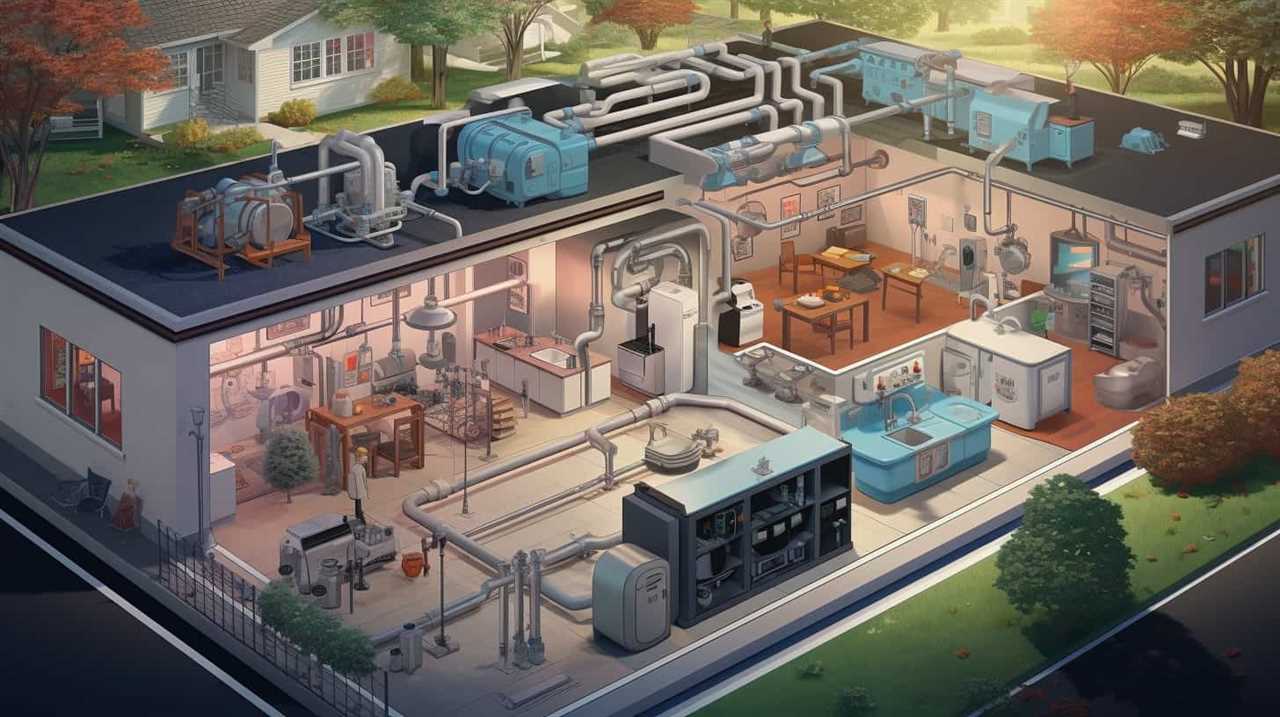
It’s important to consider climate zones and monitor energy usage for continuous improvement.
Think of your heat pump as the heart of your eco-home, pumping warmth and sustainability throughout.
Keep it healthy and efficient for a truly harmonious living environment.



